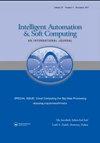An Improved Time Feedforward Connections Recurrent Neural Networks
IF 2
4区 计算机科学
Q2 Computer Science
引用次数: 1
Abstract
Recurrent Neural Networks (RNNs) have been widely applied to deal with temporal problems, such as flood forecasting and financial data processing. On the one hand, traditional RNNs models amplify the gradient issue due to the strict time serial dependency, making it difficult to realize a long-term memory function. On the other hand, RNNs cells are highly complex, which will significantly increase computational complexity and cause waste of computational resources during model training. In this paper, an improved Time Feedforward Connections Recurrent Neural Networks (TFC-RNNs) model was first proposed to address the gradient issue. A parallel branch was introduced for the hidden state at time t − 2 to be directly transferred to time t without the nonlinear transformation at time t − 1. This is effective in improving the long-term dependence of RNNs. Then, a novel cell structure named Single Gate Recurrent Unit (SGRU) was presented. This cell structure can reduce the number of parameters for RNNs cell, consequently reducing the computational complexity. Next, applying SGRU to TFC-RNNs as a new TFC-SGRU model solves the above two difficulties. Finally, the performance of our proposed TFC-SGRU was verified through several experiments in terms of long-term memory and anti-interference capabilities. Experimental results demonstrated that our proposed TFC-SGRU model can capture helpful information with time step 1500 and effectively filter out the noise. The TFC-SGRU model accuracy is better than the LSTM and GRU models regarding language processing ability.改进的时间前馈连接递归神经网络
递归神经网络(RNNs)已被广泛应用于处理时间问题,如洪水预报和金融数据处理。一方面,传统rnn模型由于严格的时间序列依赖,放大了梯度问题,难以实现长期记忆功能。另一方面,rnn细胞高度复杂,这将大大增加计算复杂度,并在模型训练过程中造成计算资源的浪费。本文首次提出了一种改进的时间前馈连接递归神经网络(TFC-RNNs)模型来解决梯度问题。在t−2时刻的隐态直接转移到t时刻,不需要进行t−1时刻的非线性变换。这对于改善rnn的长期依赖性是有效的。在此基础上,提出了一种新的细胞结构——单门循环单元(SGRU)。这种细胞结构可以减少rnn细胞的参数数量,从而降低计算复杂度。接下来,将SGRU作为一种新的TFC-SGRU模型应用于tfc - rnn,解决了上述两个难题。最后,我们提出的TFC-SGRU在长期记忆和抗干扰能力方面的性能通过几个实验进行了验证。实验结果表明,我们提出的TFC-SGRU模型可以在时间步长为1500的情况下捕获有用信息,并有效滤除噪声。在语言处理能力方面,TFC-SGRU模型精度优于LSTM和GRU模型。
本文章由计算机程序翻译,如有差异,请以英文原文为准。
求助全文
约1分钟内获得全文
求助全文
来源期刊

Intelligent Automation and Soft Computing
工程技术-计算机:人工智能
CiteScore
3.50
自引率
10.00%
发文量
429
审稿时长
10.8 months
期刊介绍:
An International Journal seeks to provide a common forum for the dissemination of accurate results about the world of intelligent automation, artificial intelligence, computer science, control, intelligent data science, modeling and systems engineering. It is intended that the articles published in the journal will encompass both the short and the long term effects of soft computing and other related fields such as robotics, control, computer, vision, speech recognition, pattern recognition, data mining, big data, data analytics, machine intelligence, cyber security and deep learning. It further hopes it will address the existing and emerging relationships between automation, systems engineering, system of systems engineering and soft computing. The journal will publish original and survey papers on artificial intelligence, intelligent automation and computer engineering with an emphasis on current and potential applications of soft computing. It will have a broad interest in all engineering disciplines, computer science, and related technological fields such as medicine, biology operations research, technology management, agriculture and information technology.
 求助内容:
求助内容: 应助结果提醒方式:
应助结果提醒方式:


